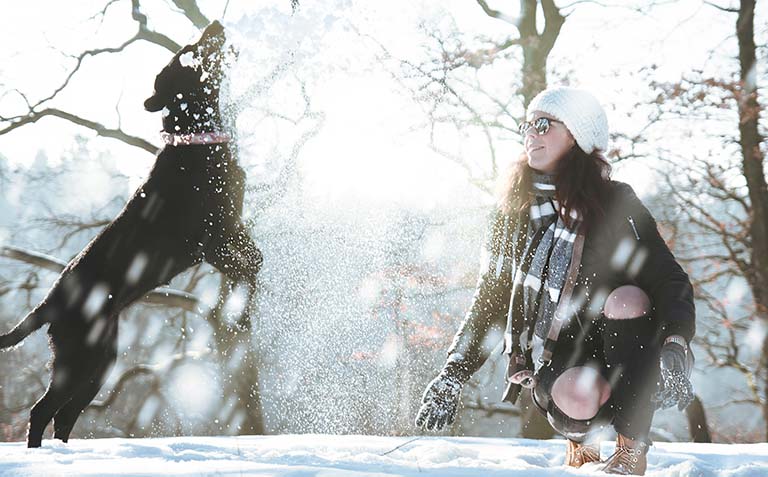Winter poses numerous challenges and hazards for dogs and hinders the extent they can exercise freely. This blog provides essential tips and practices to ensure the safety, health and happiness of your canine companion during the freezing months. Learn about important outdoor precautions, grooming routines and engaging indoor activities to help you provide your dog with the winter care they deserve.
The Best Time to Take Your Dog Outside
During the cold winter months, late mornings and early afternoons are the best time for outdoor activities with your dog since temperatures in the middle of the day tend to be slightly warmer compared to the early morning or evening. Your dog may not get as much exercise as usual due to the harsh weather, so it’s important to make the most of this time by going for a walk or playing with your canine in the snow.
Another benefit of taking your pet outside in the middle of the day is a higher chance of seeing the sun. Both humans and animals benefit from sunshine. Exposure to sunlight helps dogs maintain a normal circadian rhythm – the 24-hour internal clock in their brain that regulates cycles of wakefulness and sleep. Daily sunshine also contributes to the dog’s overall health and well-being. Given that winter brings shorter and rarer hours of sunlight, it’s important to take advantage of it whenever it appears.
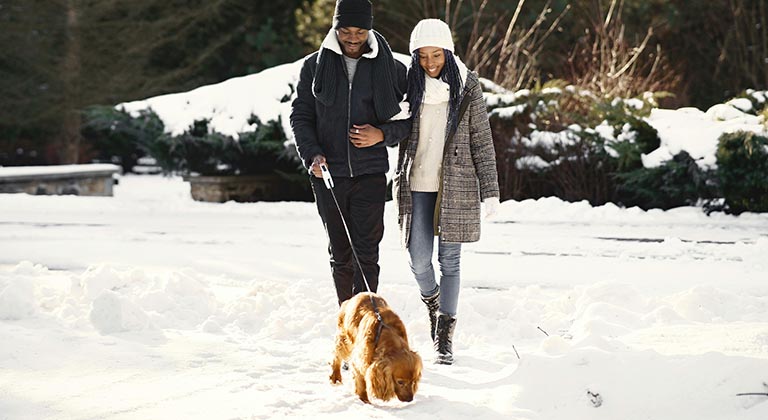
Outdoor Safety
Going on outdoor adventures can be fun, though it’s important to exercise caution. It is a good idea to steer clear of frozen bodies of water such as lakes and ponds. The stability of the ice is uncertain, and there’s a risk that it may not support you or your dog’s weight. If your furry friend falls through the ice, the consequences can be severe and even fatal. Furthermore, if you attempt to rescue your dog, you might put both of your lives in danger.

Limit the Length of Outdoor Time
Understanding your dog’s individual cold weather tolerance is crucial for their safety and comfort. Recognizing their limits and being vigilant for signs such as shivering, whining, lethargy, weakness and slowed movements can help you identify when they’ve been outside for too long.
Cold tolerance varies from dog to dog and is based on their coat type, activity level, age, health and body fat stores. This includes elderly canines and puppies, as well as dogs with health conditions like Cushing’s disease, heart or kidney disease, diabetes and arthritis. Canines in these categories may have a harder time effectively regulating their body temperature. Short-haired dogs are also more vulnerable to the cold compared to their counterparts like huskies, malamutes and St. Bernards, whose thicker coats provide enhanced protection.
It’s important to note that regardless of your dog’s coat type, their ears, paws and tails remain vulnerable to frostbite in cold weather. Prioritize their winter care. As temperatures drop, avoid leaving your dog outdoors for prolonged periods to prevent potential discomfort and health issues.
To help keep your dog warm, you may wish to invest in canine sweaters and coats. This helps pets stay warmer longer so they can still enjoy the winter fun.
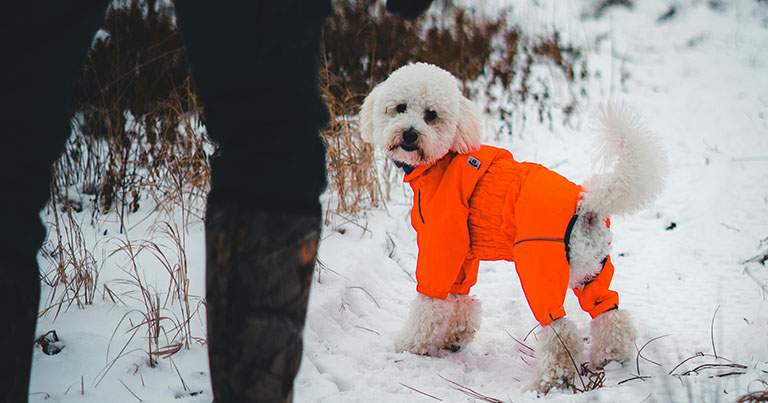
Dogs in Cars During Winter
Along with limiting time outdoors, it’s important to ensure your pet doesn’t spend a great length of time in a car. The dangers of a hot car during the summer are well known; however, a cold car can be just as dangerous for your pet. In cold weather, cars can turn into refrigerators by trapping frigid air inside. This environment can lead to a rapid drop in your dog’s body temperature, causing shivering and discomfort. Whether running errands or attending appointments, it’s safer to leave your furry friend at home where they can stay warm and secure instead of leaving them in a vehicle.
Keep Your Pet Cozy
Just like humans, pets enjoy comfortable sleeping spaces. Invest in a cozy bed for your dog to sleep in or provide snuggly blankets for them to cuddle with on the couch. Ensure their bedding is away from drafts and cold spots. If your dog tends to switch between wanting a warmer or colder spot, consider placing different bedding in various locations throughout the house to accommodate their changing needs.

Keep Dogs on a Healthy Diet
The winter months do not encourage a consistently active environment for most dogs. This may result in a reduced need for calories. Adjust your dog’s food accordingly to prevent excessive weight gain. Even though a bit of extra weight may seem beneficial for insulation, the associated health risks of extra fat outweigh the potential benefits. It is best to maintain a healthy diet that matches their activity levels. Consult your veterinarian about your pet’s nutritional needs and any changes that must be made during the cold season.
Maintain Your Dog’s Healthy Coat and Skin
Regular winter grooming is essential for winter care and maintaining your dog’s skin and coat health. Use moisturizing shampoo and conditioner to hydrate their dry skin. Brush your dog daily to get out the dead undercoat and prevent matting. Stick to a consistent grooming schedule to keep your dog clean and looking their best. Consult with your groomer for their recommendations regarding the best shampoos, conditioners and skin treatments for your dog.
In addition to regular grooming you can add supplements like omega 3 and 6 to your dog’s food. Another option is to apply coconut oil to your canine’s skin to relieve dry and itchy skin. Both measures help to promote your dog’s skin and coat health. For more information on caring for your dog’s winter coat, visit this blog.
Pay Extra Attention to Their Paws
A dog’s paws come in direct contact with snow, ice and salt during the wintertime. To safeguard their paw pads it’s a good idea to make it a habit to wipe their paws after walks to remove any salt or antifreeze they may have picked up. Regularly trim the hair between your dog’s toes to prevent ice buildup to prevent an increased risk of frostbite or dry paw pads. Follow up with a slather of paw balm to condition, repair and protect the skin on their paws. If you believe your pet will be receptive, consider using dog booties. Canine boots are an excellent way to protect your furry friend’s feet and keep them warm during winter.
While dog nails can naturally be shortened by scratching on concrete sidewalks, snow and ice can prevent this by acting as a barrier. Monitor your pet’s nail length to reduce the chances of them slipping on ice due to a lack of traction. When the nails become too long, trim them at home or take your dog to a professional groomer where they can cut and buffer their nails.
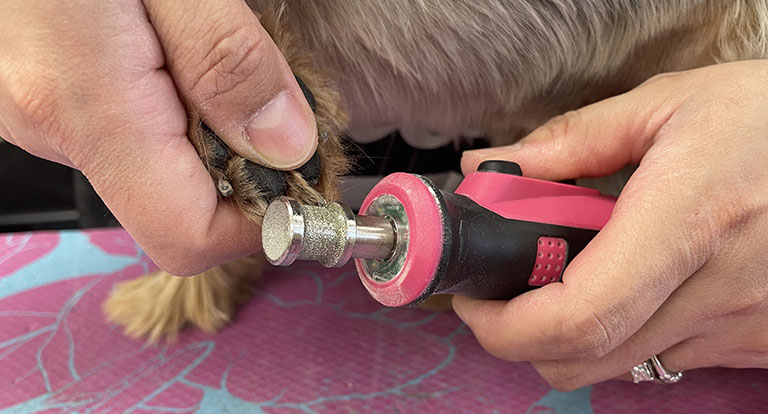
Tend to Dry, Cracked Dog Noses
Winter months bring low humidity, and dogs are likely to warm themselves by a heater or other heat source, causing noses to become more dry. For this reason, many dog owners utilize humidifiers indoors to help replenish moisture in the air.
Many people forget that dogs have sensitive skin just like humans do. When our hands get dry or cracked, we tend to the affected areas with lotion. The easiest way to prevent your pet from getting a dry or cracked nose is by being proactive and applying nose balm.
While dry noses aren’t necessarily a cause for concern, noses that are cracked can be painful for your pet. For more information on dry, cracked noses, read this blog.
Note: “Winter nose” and “snow nose” is when a dog’s nose changes color in winter months – typically lightening in color from a dark color to a light brown or pink. This condition is generally purely cosmetic and not a cause for concern.
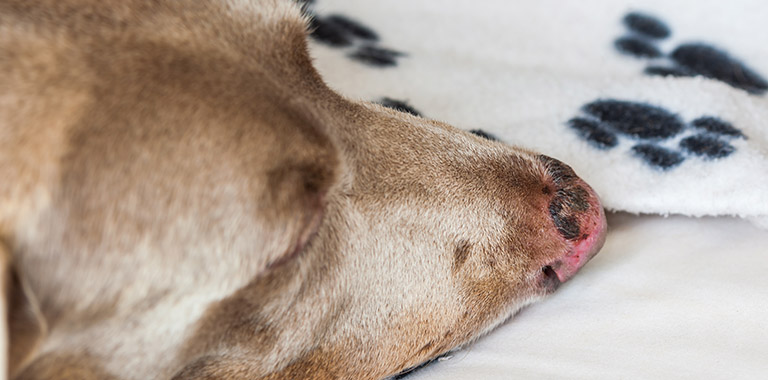
Beware of Poisonous Winter Products
Antifreeze has a sweet taste that may attract dogs, but it’s highly toxic to them. Keep your dog away from areas where antifreeze may be present. Consider wiping down your dog’s paws, legs and belly after walks. This helps to remove antifreeze, de-icing products and other chemicals before the dog can lick them and risk getting poisoned.
Having Fun Indoors
Indoor confinement can impact your dog’s mental health, leading to boredom and decreased activity. Keep your dog moving by introducing fun games such as hide-and-seek, tug of war and indoor fetch. Stimulate their mind by teaching new tricks like playing dead or spinning around on command. Puzzle toys can offer an opportunity for problem-solving to win treats. Hide treats around the house for a scavenger hunt, activating their sniffing instincts. Take them to a local pet store to pick out a new toy or chew to help prevent boredom during their day.
Enjoying the Season to the Fullest
Ensure your dog thrives during the colder months by staying mindful of potential risks, adhering to grooming routines and creating a stimulating environment for your pet. Aim to take pets outside during the warmest part of the day and consider adding extra layers to help keep them warm. Pay attention to your dog’s paws, nose and potential weight gain and consider adding warm bedding to your pet’s environment to make it cozy. By following these tips, you can provide the best winter care and make the cold winter season a time filled with warmth, good health and joyful moments.


